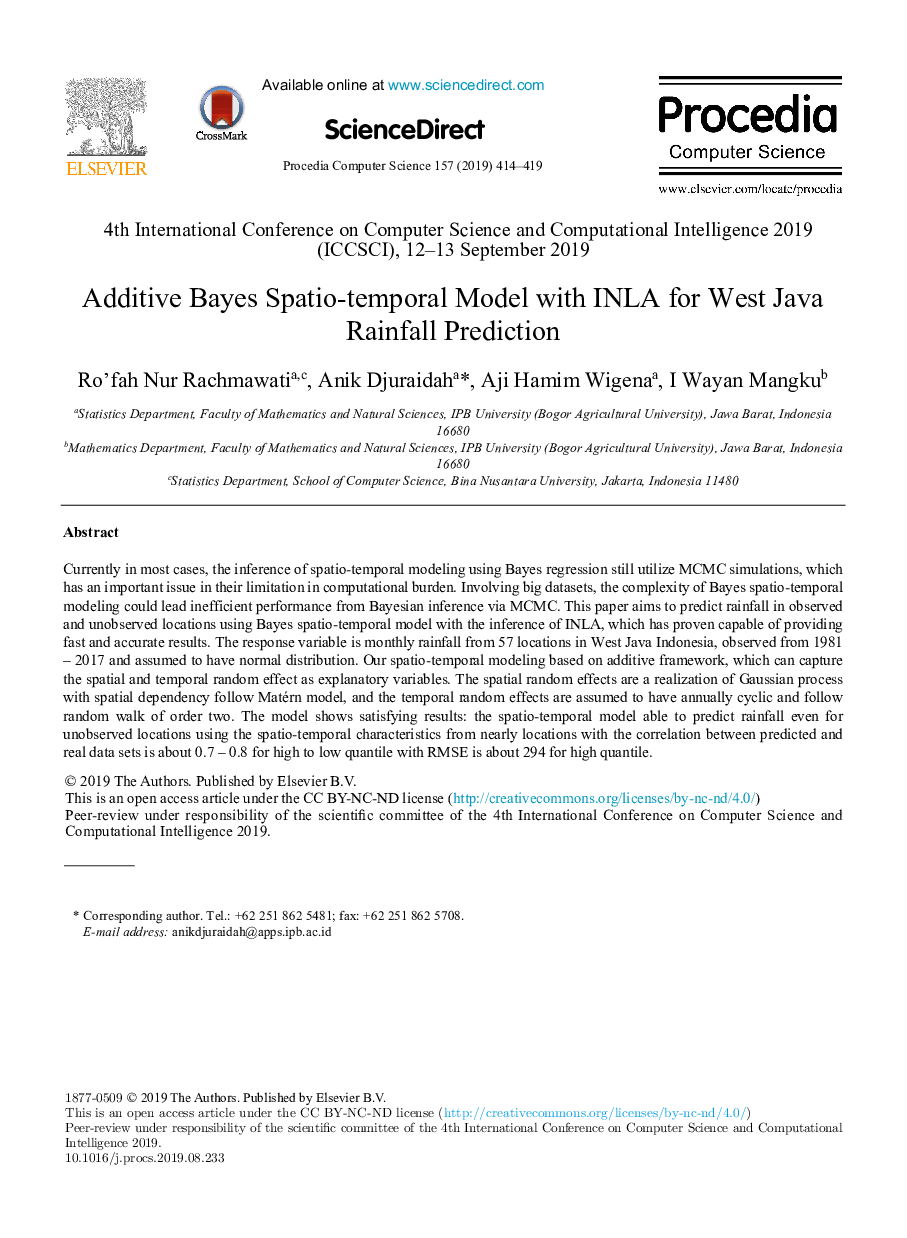| Article ID | Journal | Published Year | Pages | File Type |
|---|---|---|---|---|
| 13434632 | Procedia Computer Science | 2019 | 6 Pages |
Abstract
Currently in most cases, the inference of spatio-temporal modeling using Bayes regression still utilize MCMC simulations, which has an important issue in their limitation in computational burden. Involving big datasets, the complexity of Bayes spatio-temporal modeling could lead inefficient performance from Bayesian inference via MCMC. This paper aims to predict rainfall in observed and unobserved locations using Bayes spatio-temporal model with the inference of INLA, which has proven capable of providing fast and accurate results. The response variable is monthly rainfall from 57 locations in West Java Indonesia, observed from 1981 - 2017 and assumed to have normal distribution. Our spatio-temporal modeling based on additive framework, which can capture the spatial and temporal random effect as explanatory variables. The spatial random effects are a realization of Gaussian process with spatial dependency follow Matérn model, and the temporal random effects are assumed to have annually cyclic and follow random walk of order two. The model shows satisfying results: the spatio-temporal model able to predict rainfall even for unobserved locations using the spatio-temporal characteristics from nearly locations with the correlation between predicted and real data sets is about 0.7 - 0.8 for high to low quantile with RMSE is about 294 for high quantile.
Keywords
Related Topics
Physical Sciences and Engineering
Computer Science
Computer Science (General)
Authors
Ro'fah Nur Rachmawati, Anik Djuraidah, Aji Hamim Wigena, I Wayan Mangku,
